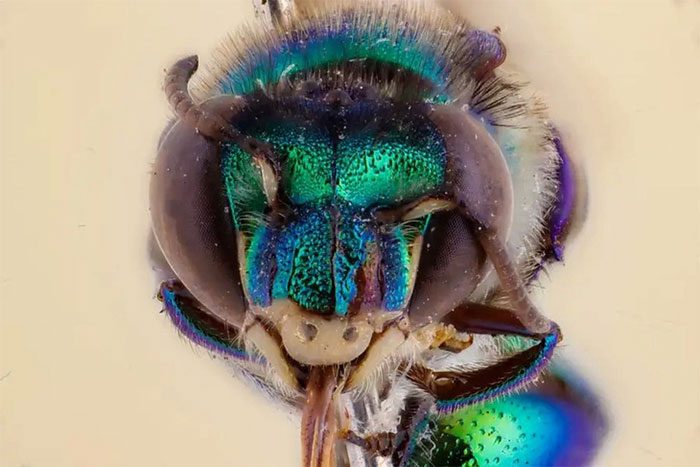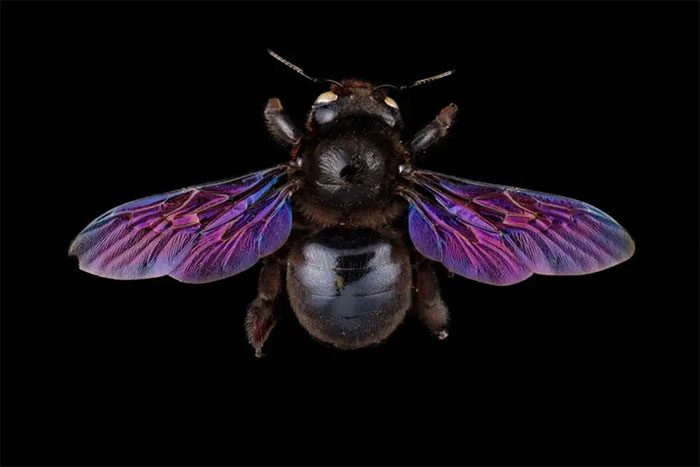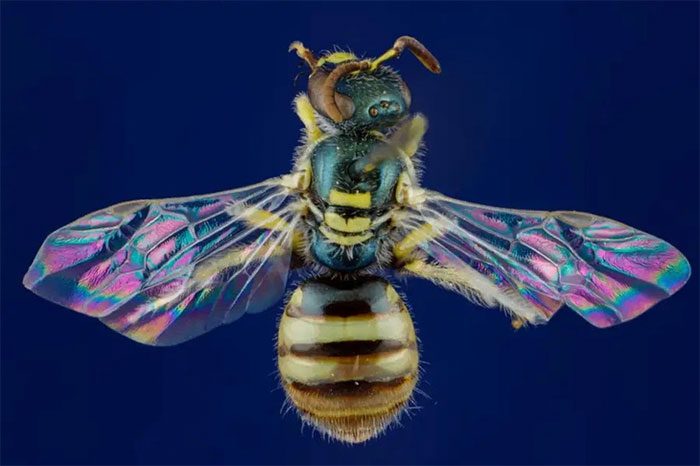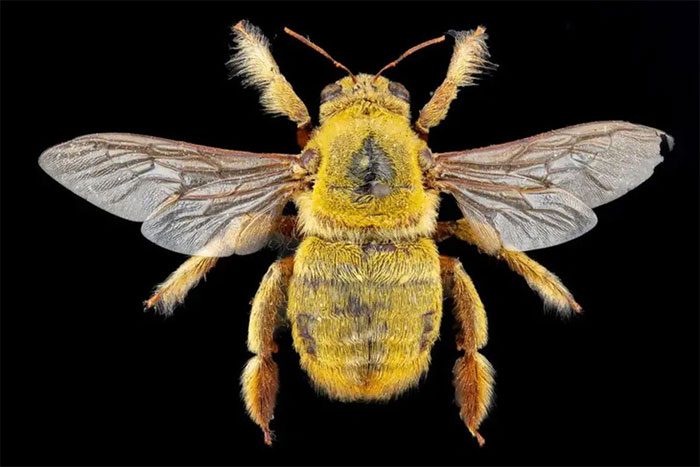Through these images, we can see the beauty of bees and their importance to the ecosystem.
Very few insects (or even animals) have such a significant impact on our planet as bees do.

An orchid bee from the genus Euglossa – (Photo: Pete Carr).
As pollinators that move from flower to flower, from one season to the next, they help maintain the health of plant life and biodiversity around the world.
Bees have lived on Earth since the time of the dinosaurs, evolving over millions of years. Bees are essential for our survival, but environmental changes, climate shifts, and other factors such as pesticides mean that their existence is now threatened, pushing them to the brink of extinction.
A new exhibition about these vital creatures titled Bees: The Story of Survival provides a specific, detailed, and profound look into their world, from the complex anatomy of a bee to the structure of an entire hive.
In collaboration with artist Wolfgang Buttress, utilizing sound, sculpture, and light, blending art and technology, the organizers aim to show visitors the life of bees around the globe, illustrating the severe consequences of their loss.
At the exhibition, you will encounter a bee from the genus Euglossa, also known as an orchid bee. This species plays a crucial role in pollinating orchids in North and South America. Males use scents from chemicals they collect during pollination to attract females; the more complex the scent, the greater the allure.
Additionally, images of the violet carpenter bee (Xylocopa violacea) can be seen, recognizable by its violet-hued wings and body, and is one of the largest bee species in Europe.

Violet carpenter bee (Xylocopa violacea) – (Photo: Pete Carr).
A bee from the genus Nomioides is also featured, one of the smallest and most slender bee species, with colors ranging from black to yellow. They are widely distributed across the globe and are often found in environments such as flower fields and gardens.
Bees from the genus Nomioides pollinate various plant types and play an important role in natural ecosystems.

A bee from the genus Nomioides – (Photo: Pete Carr).
Also present is the African carpenter bee (Xylocopa inconspicua), a large native bee species known for its significant size, reaching about 2.5 cm in length, and its loud buzzing. They build their nests by burrowing into wooden materials such as tree trunks, dead wood, bamboo, and other types of wood.

African carpenter bee (Xylocopa inconspicua) – (Photo: Pete Carr).


















































